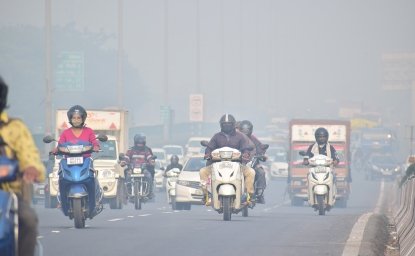
A blog of the Wilson Center

In 2023, 85% of all land border encounters with individuals on the terrorist watchlist occurred on our northern border.
In my recent Stubborn Thing, “Migration: This Time It’s Different,” I pointed out that, for the first time ever, most of the irregular encounters (the movement of people seeking to evade legal regulations and frameworks) along our southern border involved migrants originating from beyond Mexico and the Northern Triangle countries of Central America.
There’s another trend that’s fallen off policymakers’ radar: the growing numbers of irregular encounters—including with individuals on our terrorist watch list—along our northern border.
Stretching 5,525 miles, the US-Canada border is the longest land border in the world—more than twice as long as our border with Mexico. US Customs and Border Protection (CBP) reported that Fiscal Year 2023 (FY23) saw 189,000 northern land border encounters, a 73% increase from 2022 and a 597% increase from 2021. In fact, there were more northern border land encounters in FY23 than in all of 2020, 2021, and 2022 combined. In other words, while authorities have been grappling with sharp increases in migration across our southern border, crossings into the US from Canada have also been rising.
One modest factor in this increase may be that, until very recently, Canada didn’t require a visa for Mexicans entering the country and took few steps to ensure visitors left Canada after their authorized stay. Anecdotal evidence suggests human smugglers may be helping migrants purchase one-way plane tickets from Mexico to Toronto or Montreal (roughly $350) so migrants can claim asylum in Canada or cross into the United States. Social media services such as TikTok and WhatsApp are even promoting northern border crossing services and pricing plans. After much prodding from US counterparts, Canadian officials announced last month that they would reimpose visa rules for visitors from Mexico.
While the northern border crossing is seen as a “safer, easier path” to the United States, it is not without its dangers. Freezing temperatures, large rivers and lakes, and unscrupulous smugglers have contributed to disappearances and dead bodies. In March 2023, two families were found dead in the St. Lawrence River after trying to illegally enter the US. At least a dozen migrants were discovered frozen in rivers or in the forest over the past two years during similar attempts.
There’s also evidence that some of these encounters are about more than economic desperation. Recent data suggests that terrorists may be exploiting the weakness in enforcement at the northern border. According to the CBP’s Terrorist Screening Dataset (TSDS), better known as the “terrorist watchlist,” almost 86% of encounters with terrorists occurred at the northern border in FY23. Now almost halfway through FY24, that statistic has risen to 93%. A significant number of drug and weapons seizures are also taking place. In FY23, CBP seized 55,000 pounds of drugs at the northern border, including 26,900 pounds of cocaine, almost 27 times that of 2022. Weapons and ammunition seizure events at the northern border totaled 460, a 20% increase from 2022.
In short, there’s simply no doubt that the US is facing a range of challenges in its efforts to strengthen its borders against irregular migration, smuggling, organized crime, and other national security challenges. These challenges are different in scale and scope than we faced 20 and 30 years ago. Focusing only on the conditions in Mexico and the Northern Triangle means that we’re missing what drives people to come here from China, India, the Middle East, South America, and Africa. Focusing only on border crossings from Mexico also means that we’re ignoring the growing threats entering the US from the world’s largest land border.
Around the world, more people are displaced than ever before. From war to tyranny to economic desperation, the drivers of these trends are wide ranging. There isn’t one single solution, nor is there a single effective humanitarian response. But what is abundantly clear is that we can’t close our eyes or wish these problems away.
This blog was researched and drafted with the assistance of Christopher Cao.
Author

Explore More in Stubborn Things
Browse Stubborn Things
Spying on Poachers

China and the Chocolate Factory

India: Economic Growth, Environmental Realities
